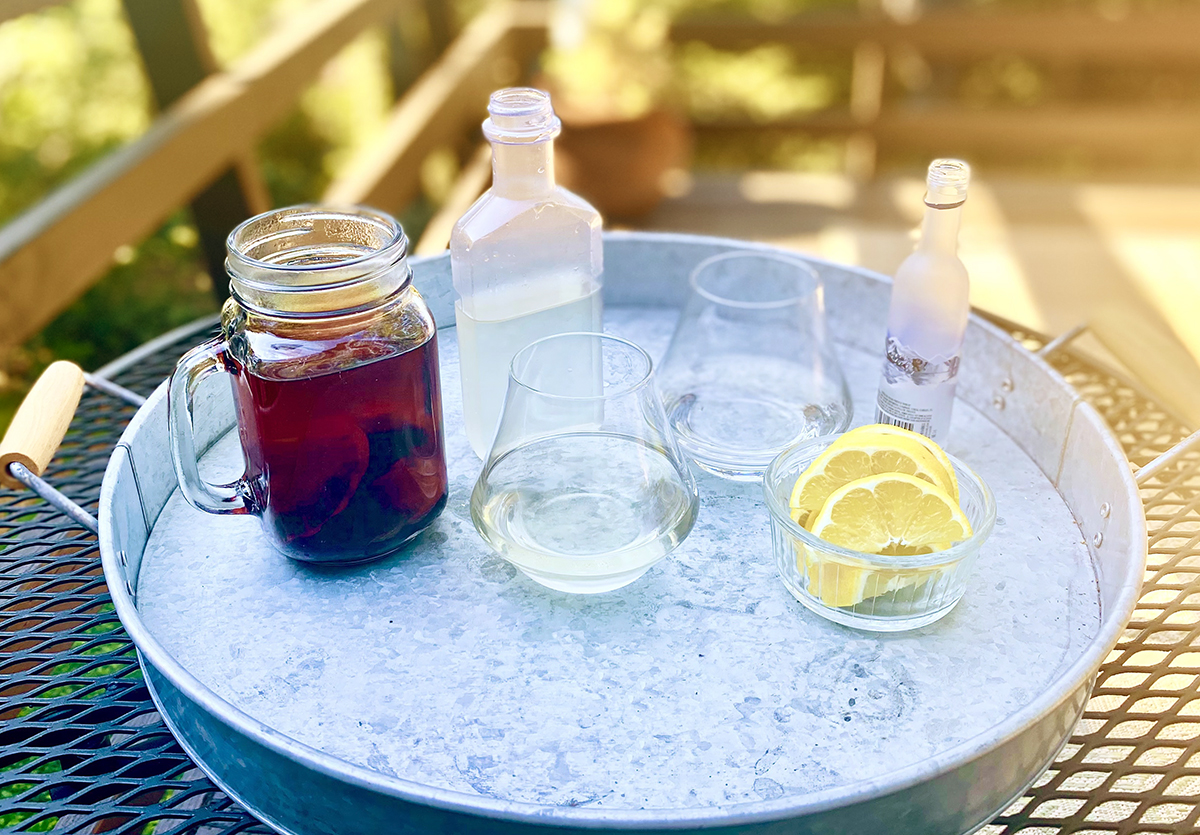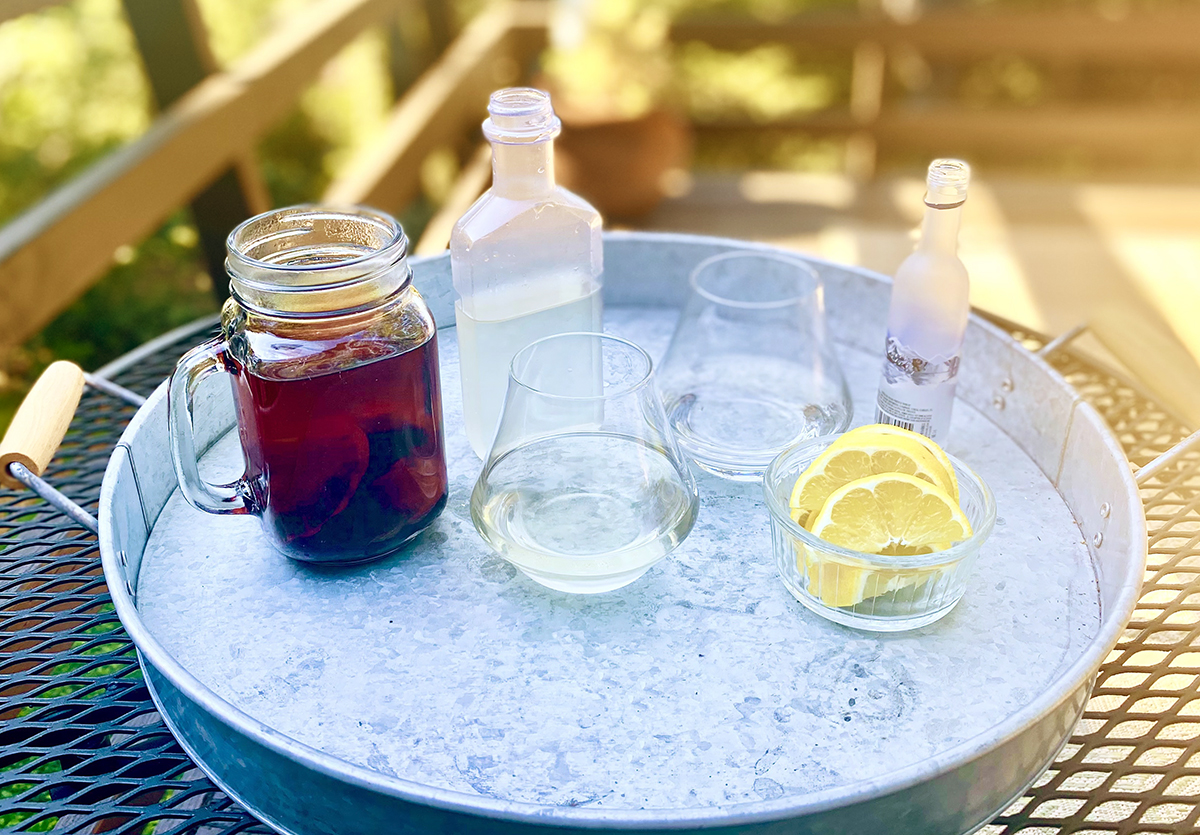Are you ready to learn how to taste wine but don’t know where to start? This fun and simple exercise will introduce you to the key elements of wine and train your palate to assess them better. You already have the ingredients for this exercise in your pantry!

What you will need:
- Black tea bags
- Simple syrup (or sugar and water to make your own)
- Lemon wedge
- Hard liquor (whatever you have, vodka, tequila, gin, etc.)
When tasting wine, you are assessing its structure, which is made up of these four fundamental traits: tannin, sweetness, acidity, and alcohol.
- Tannin in wine comes from grape skins, seeds, and stems. Most white wines do not have detectable tannins since they do not spend time in contact with the grape skins. Thin-skinned red grapes like Pinot Noir have fewer tannins than thick-skinned grapes like Cabernet Sauvignon. Barrels used to age wines can also add tannins.
Exercise: Make a cup of black tea with four tea bags and let it over-steep for about 20 minutes. Squeeze the tea bags out into the cup when you remove them, extracting as many tannins from the tea as possible. Put the tea in your mouth and swish it before swallowing.
Tannin is all about texture. How does your mouth feel? Notice that your mouth and gums feel dried out. Does your tongue feel stuck to the inside of your mouth? This is tannin. Remember this feeling the next time you taste red wine. The more intensely you experience this drying sensation in your mouth, the more tannic the wine.
- The sweetness of a wine is determined by how much residual sugar remains after fermentation. It is a common misconception that certain grape varieties are sweet when actually, the sweetness level in a wine is controlled during the winemaking process.
Exercise: Pour yourself a small glass of simple syrup (if you don’t have any, mix equal parts sugar and water in a saucepan, boil until the sugar is dissolved, and then let it cool before tasting).
Smell the simple syrup. What do you smell? The answer is … nothing! You can’t smell sweetness in a wine which is important to note. Many people confuse ripe fruit aromas with sweetness. Just because a wine smells “fruity” doesn’t mean it is sweet. Now, put the simple syrup in your mouth and swish it around. Feel the weight of it in your mouth.
The sweeter a wine is, the heavier it will feel in your mouth (think about how skim, 2%, and whole milk feels in your mouth). - Acidity is the level of tartness in a wine. The climate where the grapes were grown has the most influence on acidity in a wine. Cooler climates produce higher-acid wines, and warmer climates produce lower-acid wines.
Exercise: Bite down on the lemon wedge and let the juice sit in your mouth. Feel the acid on the sides of your tongue and mouth. Are you salivating? When tasting wine, you can gauge how acidic a wine is by how intense these sensations are on your palate. - Most wines generally contain between 11% and 13% alcohol. Higher-alcohol wines can be perceived as “hot” on the palate. Usually, warmer-climate wines have higher alcohol than cooler-climate wines.
Exercise: Take a shot of clear liquor. Swish it around and let it sit in your mouth for a few seconds. Spit or swallow the liquor and notice the hot, burning sensation in your mouth and the burning in your nostrils when you breathe out. Even though a wine would never be this high in alcohol, paying attention to how “hot” a wine feels in your mouth can help you determine the level of alcohol. When assessing alcohol in wine, it’s also worth noting that higher-alcohol wines are generally fuller-bodied than lower-alcohol wines, which are lighter-bodied.
Now that you better understand the key elements of wine, it’s time to taste! Learn how to taste with a tasting grid to become a wine-tasting pro.
